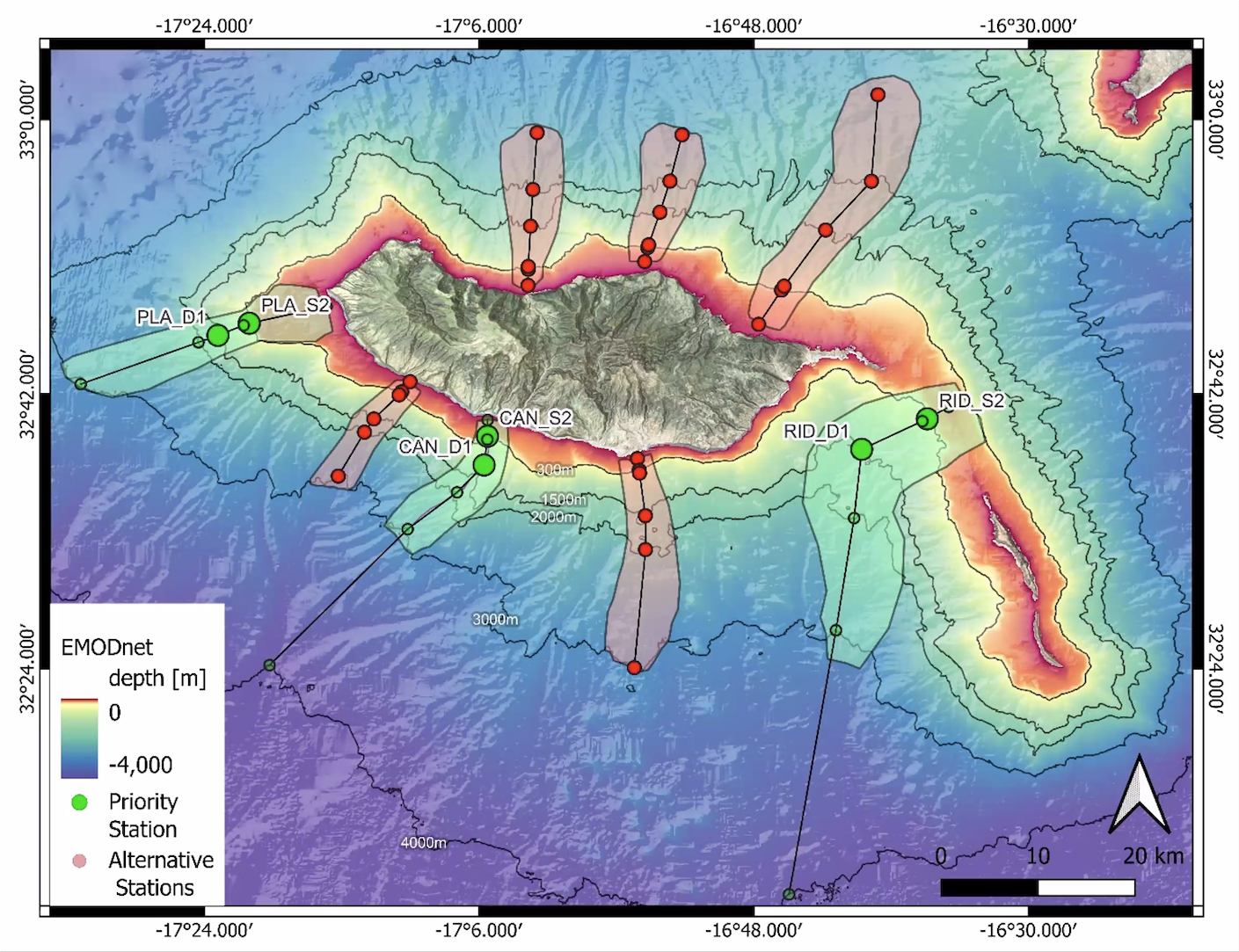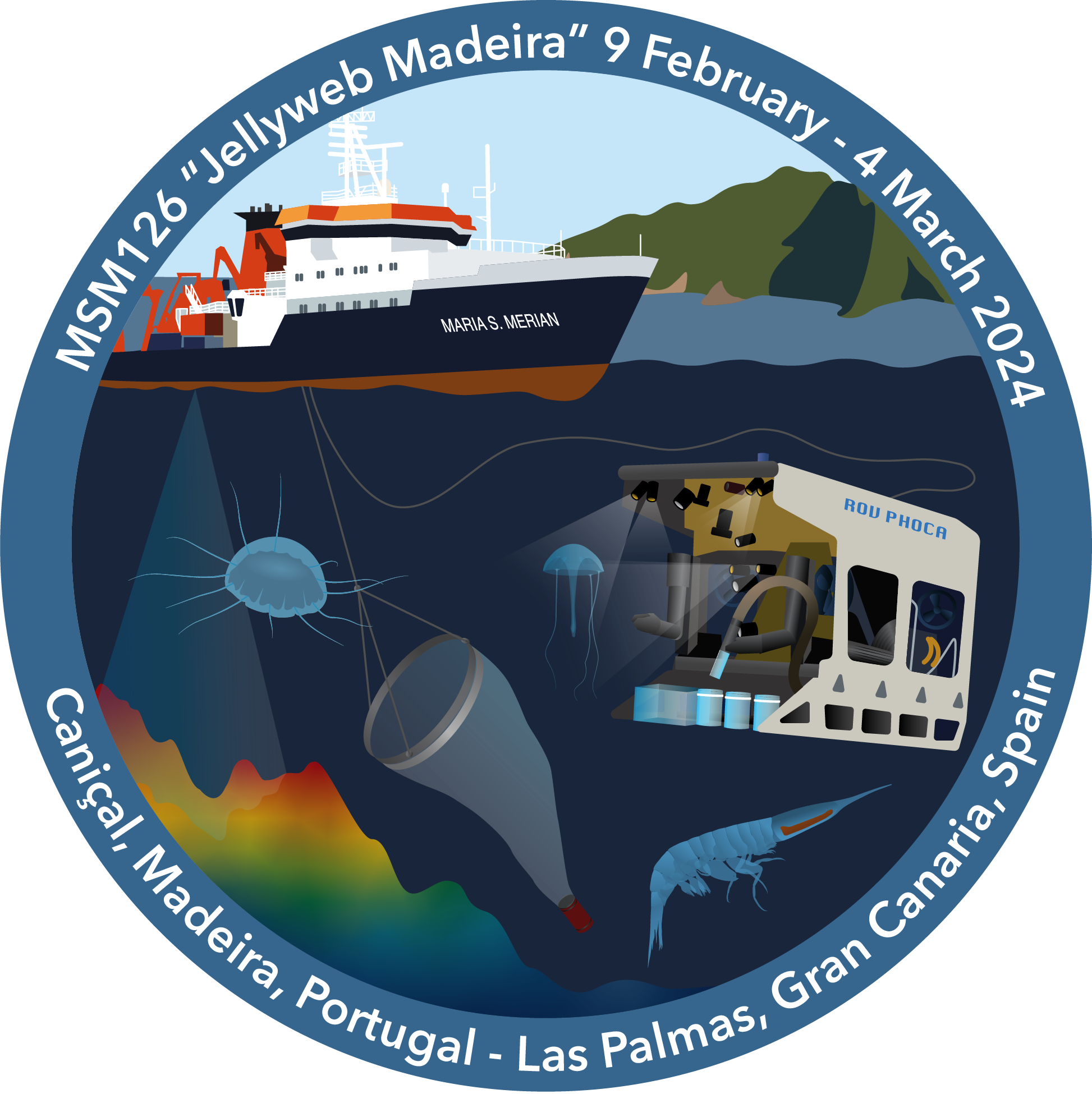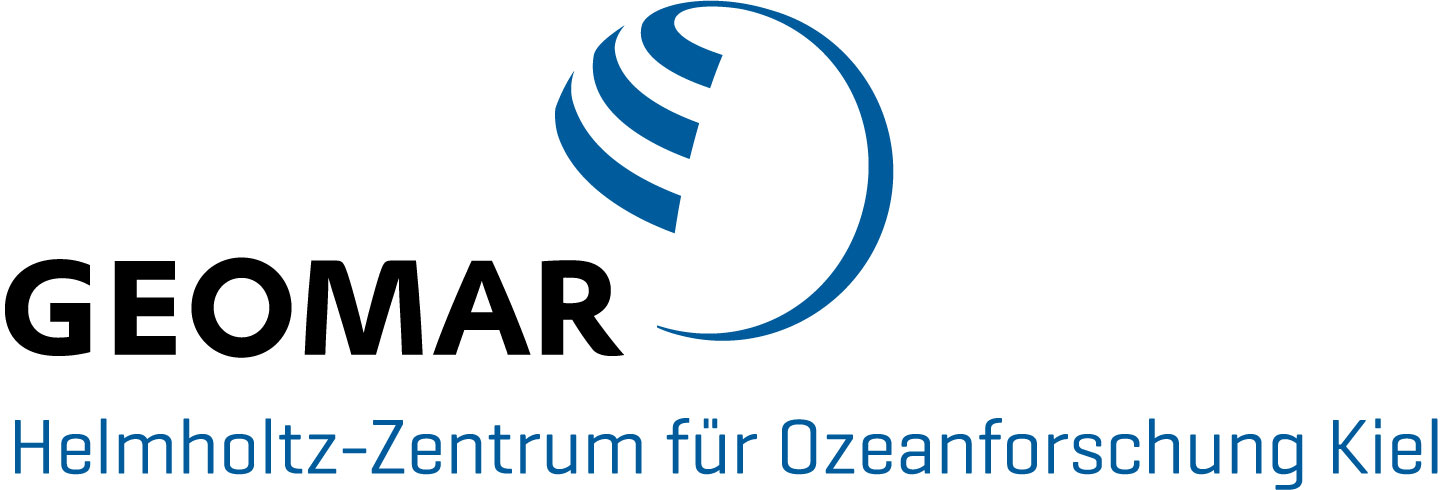The focus of MSM126 lies on the pelagic deep sea, which belongs to the least explored ecosystems on earth. We will work in the area off Madeira Island in the North Atlantic Ocean. Research aims include the documentation of biodiversity and of the vertical and horizontal distribution of species in relations to physical and chemical parameters and oceanographic features, food web relations, and the role of pelagic fauna in transferring carbon to the seafloor. A particular knowledge gap concerns the biodiversity and functional role of gelatinous macrozooplankton (the “jelly web”) in pelagic oceanic food webs. Our work aims to address the current knowledge gaps biodiversity exploration and dedicated sampling of representatives of all trophic levels of the food web. The cruise will be embedded in ongoing work to unravel the biodiversity and food webs in the Macaronesian Island region, with a focus on gelatinous macrozooplankton. We will use a wide range of established and novel in-situ observation (pelagic and benthic towed camera observation sytems, remotely operated vehicle ROV PHOCA) and sampling technology (various nets, ROV PHOCA samplers), coupled to state-of-the-art laboratory analyses, including metagenomics approaches and stable isotope analysis, focusing on Madeira as the least explored of the Macaronesian Islands. The intense measurements and observations as well as sampling efforts (and subsequent laboratory analyses) focusing on a small area have the potential to lead to major advances in the functional understanding of the deep-sea systems, including the role of the jelly web, of Madeira. Ultimately, we hope that the resulting scientific understanding has the potential to contribute to the protection and sustainable management of Madeira marine ecosystems and biodiversity.

Fig 1) Working areas in Madeira


















